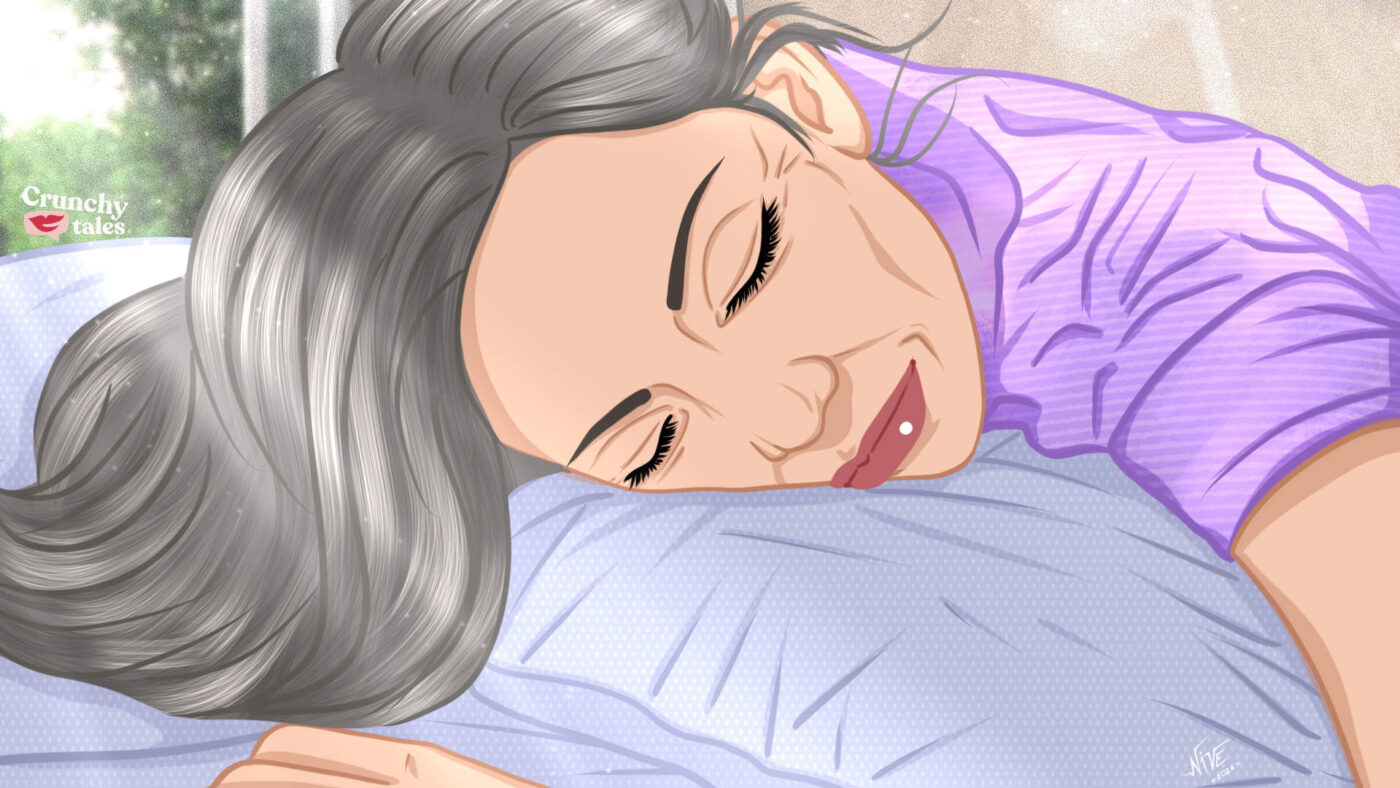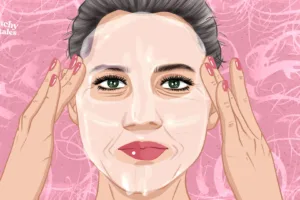Could Your Sleep Habits Be Aging You? Discover the Link Between Sleep and Wrinkles
We all know sleep is vital for our health, especially in midlife, but did you know that the wrong position could add years to your face? While genetics play a major role, how you sleep can influence the appearance of wrinkles and facial sagging because of the constant pressure of your face against the pillow all night.
The Science Behind Sleep Habits and Skin
Skin is the body’s largest organ and serves as its first line of defence against environmental damage. During sleep, the body goes into repair mode, producing collagen, increasing blood flow, and reducing cortisol levels, all of which contribute to healthier skin. However, the position in which you sleep can either support or sabotage these rejuvenating processes.
The pressure of your face against the pillow can cause the skin to fold and compress and this repeated compression breaks down collagen and elastin fibres, leading to the formation of wrinkles. Also, some sleep positions can restrict blood flow to certain areas of your face, depriving your skin of essential nutrients and oxygen needed for repair and regeneration.
According to Konstantin Vasyukevich, MD, a cosmetic doctor and board-certified facial plastic surgeon in New York City, the horizontal position your body takes during sleep shifts the balance of fluid distribution towards the upper body (which is why facial swelling is usually seen early in the morning).
“The long-term effects of this continuous cyclical swelling should not be underestimated,” he says. “Daily expansion and contraction of the facial tissue put a strain on the ligamentous support of the face. This eventually leads to stretching and sagging associated with an aged appearance.“
Sleep Positions and Their Effects On Skin
If you want to improve your beauty sleep, it might be time to rethink your sleep position too, although, it’s only one factor among many.
Here are the worst and the best sleep positions and how they affect your skin.
Stomach Sleeping
Sleeping on your stomach can be detrimental to your skin. The face is pressed against the pillow, creating friction and pressure that can lead to wrinkles and fine lines over time. This position can also cause puffiness due to restricted blood flow. Prolonged contact with the pillow can also trap oils and bacteria against your skin, leading to breakouts and irritation.
Side Sleeping
While side sleeping is more common and often more comfortable than stomach sleeping, it can still cause issues. The constant pressure on one side of the face can lead to asymmetrical ageing, with more pronounced lines and wrinkles on the side that you sleep on. This is often referred to as “sleep lines.” Over time, the repeated squishing of your face into the pillow can cause the skin to lose elasticity and firmness, contributing to sagging and a tired appearance.
Back Sleeping
Back sleeping is generally considered the best position for maintaining glowing skin. It allows the face to be free from contact with the pillow, minimizing pressure and friction. This position also promotes even blood flow, reducing puffiness and morning swelling. Sleeping on your back takes advantage of gravity to keep your skin smooth and evenly stretched, which helps prevent the formation of wrinkles.
Tips for Healthier Sleep and Skin
While it may be annoying that the position you feel the most natural and comfortable sleeping in can be a culprit in causing lines and wrinkles, you most definitely don’t want to lose sleep over it. All you have to do is make some adjustments.
Here are some tips to help you prevent sleep wrinkles.
Train Yourself to Sleep on Your Back: If you’re not naturally a back sleeper, it can be challenging to make the switch. Start by using pillows to prop yourself up and keep your body in place. Over time, your body will adapt to this new position.
Use Silk Pillowcases: Silk pillowcases are less abrasive than cotton and can reduce friction, helping to prevent wrinkles and irritation. They also absorb less moisture, keeping your skin hydrated throughout the night. According to dermatologist Dr Debra Jaliman, author of “Skin Rules,” sleeping with your face in contact with cotton pillowcases, such as on your side or stomach, can cause deep sleep lines on your forehead and cheeks.
Invest in Quality Pillows: A good pillow can provide the necessary support for your neck and spine, encouraging you to stay in a back-sleeping position. Look for pillows designed specifically for back sleepers.
Maintain a Skincare Routine: Regardless of your sleep position, a consistent skincare routine before bed can help mitigate some of the negative effects. Cleanse your skin thoroughly to remove makeup, dirt, and oils. Use products that promote collagen production and skin repair, such as retinoids and hyaluronic acid.
Stay Hydrated and Healthy: Hydrated skin is more resilient and less prone to wrinkles. Drink plenty of water and maintain a balanced diet rich in vitamins and antioxidants to support skin health from the inside out.
While a healthy lifestyle is undoubtedly the cornerstone of glowing skin, the importance of quality sleep cannot be overstated. By combining a nutritious diet, regular exercise, proper hydration, stress management, and optimized sleep habits, you can unlock the true potential of your skin’s natural radiance.
Remember, beauty sleep is not just a cliché – it’s a vital component of your skincare routine that works from the inside out.
Like this post? Support Us or Sign up to our newsletter to get more articles like this delivered straight to your inbox!





